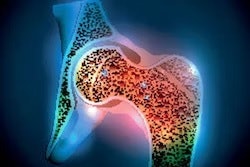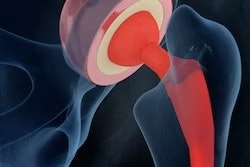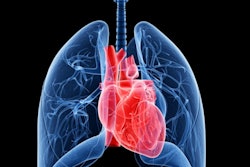Implementing a clinical bone health protocol may reduce fractures in lung transplant recipients, according to researchers at the University of North Carolina.
The group found that a bone health protocol improved bone mineral density (BMD) measured by dual-energy x-ray absorptiometry (DEXA), and may reduce the risk of clinically significant fractures at two years post-transplant, according to clinical pharmacist Shelby Tungate, PharmD, and colleagues.
“Bone health in adult lung transplant recipients is a notable concern that carries significant risks if not addressed,” the group wrote, in a study published December 30 in Transplantation Reports.
Chronic corticosteroids are a cornerstone of successful immunosuppression in patients following lung transplant, the authors explained. Their use is associated with known negative effects on BMD that lead to osteopenia and osteoporosis in a majority of lung transplant recipients.
Yet given the complexity of care following lung transplants, preventative bone health may be overlooked, the authors noted.
In this study, the group thus evaluated the impact of a multidisciplinary bone health assessment and treatment protocol in patients treated at their transplant clinic at UNC Health in Chapel Hill. The protocol included multidisciplinary team education, initiation of DEXA screening at prespecified intervals post-transplant, and assessment of adequate calcium and vitamin D supplementation.
The study included 58 lung transplant recipients: 38 in the preprotocol and 20 in the postprotocol groups, with measurements compared between the patients at two years post-transplant.
According to the findings, patients in the postprotocol group had significantly less bone density loss as measured by femur z- and t-scores in repeat DEXA scans (p = 0.05 and 0.04). Also, fractures within two years post-transplant were numerically lower in the postprotocol group (21% vs. 15%, p=0.58).
In addition, transplant recipients in the postprotocol group were more likely to be prescribed antiresorptive therapy (40% versus 11%, p = 0.008) as well as calcium therapy (70% versus 24%, p = < 0.001), the group noted.
“The implementation of a multidisciplinary bone health protocol improved screening, use of bone health therapies and improved bone health as measured by DEXA,” the researchers wrote.
Ultimately, clinically significant osteoporotic fractures are a well-described complication of solid organ transplantation and associated corticosteroid use, the authors noted. Bone health protocols in lung transplant recipients are needed to mitigate the morbidities of bone disease, they suggested.
“The protocolization of care is a standard approach to improving health care,” the researchers concluded.
The full study can be found here.



















